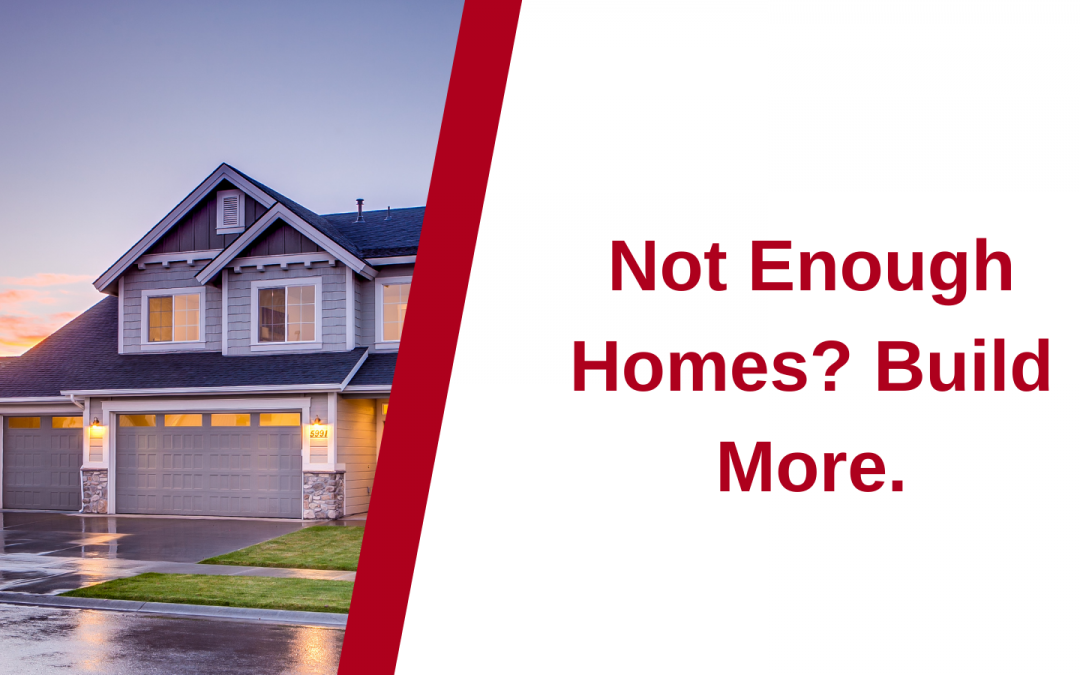In 2018 the New Democrat Coalition released a study noting that the US is missing one million homes. Problem seems simple enough to solve – build more homes. Sure, okay, let’s do that. In order to do that a homebuilder needs to navigate – land use and permitting, labor, lumber, and lending issues.
Nationally, nearly a quarter of the price of a new home is attributable to regulatory requirements, stuff like: zoning, design requirements, parking requirements, street widths and lengths, tree retention, sidewalk requirements, storm water, building and energy codes, water and sewer connections, impact fees, transportation and environmental mitigation exactions, and a host of other regulatory burdens. Most jurisdictions have some form of land use planning – what types of development should go where and yet, most projects, even those meeting the underlying zoning are still subject to individual project appeals. When neighbors or BANANAs (Build Absolutely Nothing Anywhere Near Anything, they come in bunches) decide, “that while we all need more housing –not that kind of housing and definitely not there.” Dragging projects designed into multiple rounds of appeals – adding costs, time, and frequently bleeding the project dry of funds.
During that process, an applicant also gets to navigate the permitting circuses at the local building department — often ending up in a cycle of “bring me a rock, no not that one.” A process that often takes 3-5 years. Instead of streamlining the process by telling an applicant all the needed corrections upfront this process turns into a back and forth permit dance. Time sucks like these accrue carrying costs (if lending is even an option) and materials pricing, which is now changing on a daily basis.
Eventually, a builder can start building. It’s no secret the prices of lumber costs have exponentially increased – more than doubling in the last year – and a sluggish supply chain. The “whys” of the massive increased costs of lumber are many – from Canadian lumber tariffs, wildfires plaguing the western United States on a near annual basis via wildfire, COVID safety protocols are mills slowing production, to massive increase of DIY home projects while most of the world was in lockdown. There are many other lurking materials cost increases such as copper wire, which has quadrupled in the last year and suppliers are beginning to ration allocation.
And for good measure, throw in a labor shortage (skilled tradesmen pre-pandemic were in short supply and COVID didn’t make it better). For too long the educational push toward four-year college demeaning the good paying family-wage upward mobility jobs available in the trades. Throw in those states and jurisdictions where it’s difficult – if not basically illegal – to be an independent contractor, even further adding to the disincentives for skilled trades and the flexibility that independent contracting offers.
So sure, builders, build more housing – but the rest of us need to not be surprised when it comes far too late for the demand and at incredibly high costs.



Recent Comments